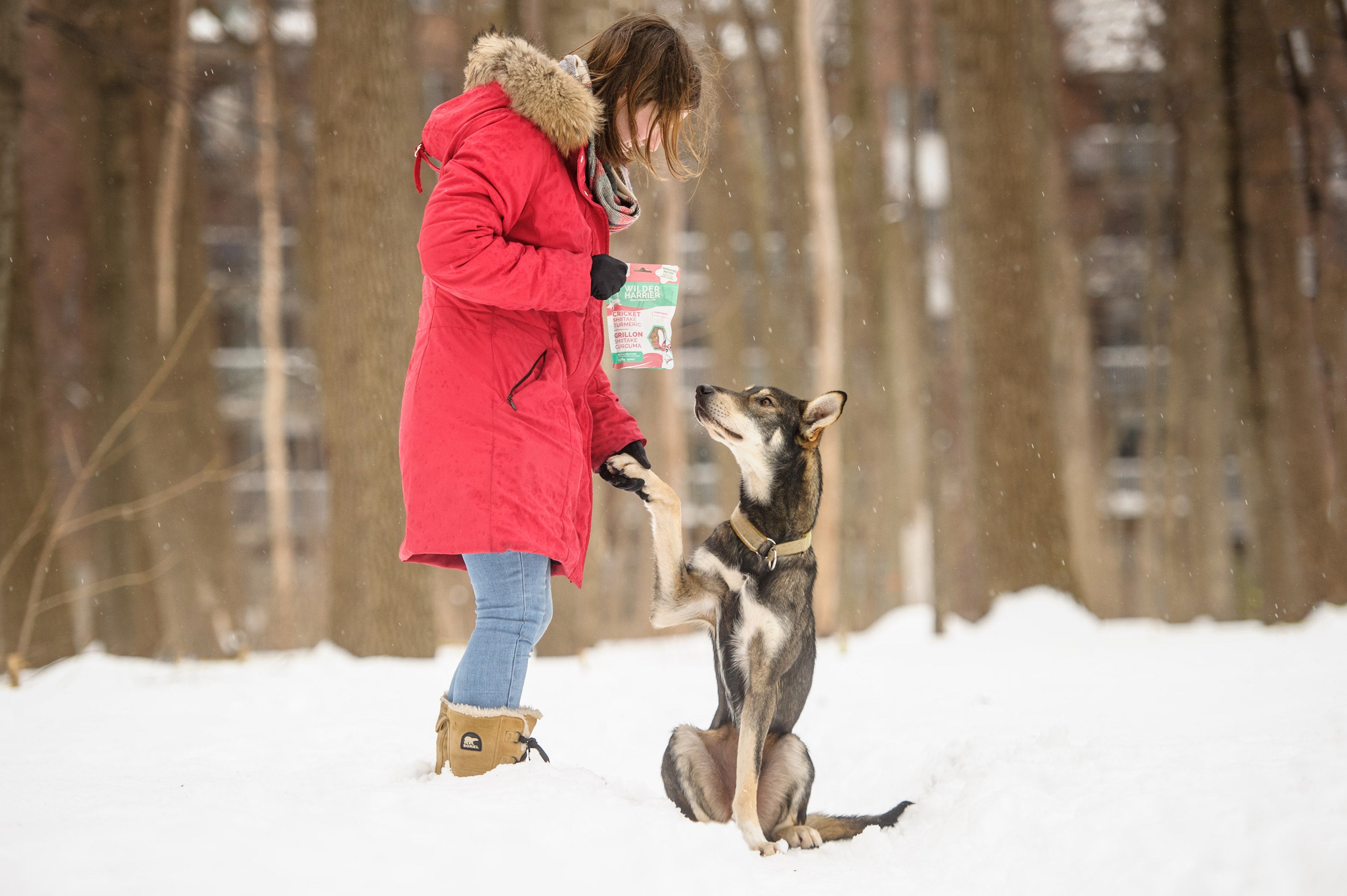When we think about how dogs came to be man’s best friend, one might envision an emboldened wolf inching his way from the cold towards a crackling fire, seeking refuge as pelted hunters toss scraps of meat his way. We can just as easily picture little wolf pups, so close to modern domesticated puppies in their sweet and playful demeanour, as being a coveted bounty for any hunter, ready to be scooped up and trained at will as allies for the hunt. We love to romanticize the story of how dogs came to be “man’s best friend”. But what really drove our species together? What do we know about our seemingly in tandem evolutionary journey?
The fact is: we agree that domesticated dogs and modern wolves share a common, prehistoric wolf ancestor. But, the agreeing pretty much stops there. Theories abound as to why and when early humans and wolf-like canines came to evolve alongside each other. The aim of this piece is to shed some light the information amassed so far in regards to the story of this veritable Friendship of the Ages.
Indeed, there is more than one possible explanation in relaying the journey of the ancestral wolf from the wilderness to the campsite. Our understanding of the genetic variations undertaken are burgeoning. We are beginning to comprehend the possibilities of how the evolution of the wolf into a domesticated canine is tied to our own evolution as a species. The main question derived from all of this is: who sought out who? Or, in other words, did we seek out the wolf - in the position of an admiring fellow carnivore - or did they seek us out in the guise of a friendly scavenger?
Let us begin with a simple question: what is coevolution? Stephen C. Searns, professor of ecology and evolutionary biology at Yale University, broadly introduces coevolution as being an evolutionary method designating genetic changes affecting organisms in a reciprocal way - in short, the concept asserting that the changes in genetic composition in one organism affect the other and vice-versa. However, coevolution can occur on many different levels, from the microbe to the macro organism. The relationship, also, can be presented in many different ways. That being said, it would be safer to claim that humans and dogs evolved in a mutualistic, coevolutionary way, as they are two separate organisms, each benefiting from each other - the dog for food and warmth and the human, protection and, presumably, some assistance during hunting.
Now, from the get-go, discordant theories abound when we examine the question of the the oldest recognized fossil record of the domesticated dog. The most widely accepted record takes us back roughly 14,500 years. However, a recently discovered 30,000 year old specimen issuing from Siberia is the top contender vying for the spot. That being said, it is disputed and not as unanimously welcomed in terms of evidence. The widest acceptable gap, thus, for dating the origins of our furry friends is large: between anywhere from 40,000 to over 10,000 years ago. The fact is, scientists are unsure if the common ancestor of modern wolves and dogs split into the two strands when we domesticated them, or if we domesticated certain more “tamable” wolves that eventually evolved into dogs but remained “wolf-like” in appearance for thousands of years (Dalén, 2015). In effect, Pontus Skoglund, who leads the study of the Siberian bone specimen, suggests that "although separation isn't the same as domestication, this opens up the possibility that domestication occurred much earlier than we thought before”. Again, "who adopted who?" seems to be the question of the hour.
What do these dates mean for the study of our mutualistic relationship with dogs? Most importantly, these dates signify that dogs held sway long before the agricultural revolution that made way for our eventual sedentism. In other words, whereas pigs, goats and cattle were domesticated as late as 10,000 years ago, the dog was already part of the picture thousands of years before. Therefore, our canine companions served another purpose - they were not animals singled out as food and thus their importance to us is singular.
All in all, their presence through the last Ice Age is fraught with uncertainty. This period in human history was trying, from an evolutionary standpoint. As humans branched out, their migration patterns coincided with the extinction of many species of megafauna - this period is dubbed the "Quaternary extinction". Whether or not there is an anthropological factor in the demise of these big beasts is still up for debate. The presence of wolf-like canines in human encampments, however, seems to be plausible. That being said, it would appear that early domesticated dogs were “helpers of the hunt”.
Another interesting theory, purported by Pennsylvania State University anthropologist Pat Shipman, suggests that a mutually beneficial, co-evolutionary relationship between early humans and wolf ancestors was instrumental to the demise of the Neanderthals. Her theory dates the beginning of our union to roughly 40,000 years ago, during a period where our modern human ancestors migrated from Africa to Europe, where Neanderthals had already been roaming for well over 200,000 years. It is inferred then that by partnering up, humans and dogs had a net advantage over other top predators, including Neanderthals:
"Early wolf-dogs would have tracked and harassed animals like elk and bison and would have hounded them until they tired. Then humans would have killed them with spears or bows and arrows. This meant the dogs did not need to approach these large cornered animals to finish them off – often the most dangerous part of a hunt – while humans didn’t have to expend energy in tracking and wearing down prey. Dogs would have done that. Then we shared the meat. It was a win-win situation.” (Shipman, 2015).
This theory is two-fold: it sets our relationship with dogs further back then what is widely supported (Shipman centers her information on canine skulls excavated from Siberia and Belgium that date from roughly 35,000 years ago) and accounts for the disappearance of our humanoid, evolutionary counterparts.
In many ways, it is safe to say that our long-standing, mutual and beneficial relationship with wolf-like canines is undeniable. Widely accepted fossil evidence suggests that our bond with dogs predates our sedentary settlements and the advent of agriculture. This information leads us to believe that dogs were most likely hunting companions. By travelling with nomadic humans, they would have acted as sources of added protection as well. Whether or not we sought them out for their animal instincts, or if certain wolf-like canines displaying a combination of boldness and cuteness warmed their way into our hearts and hearths is still up for debate. One thing remains sure: our bond with them is singular and has been praised until this day.
Discover our nourishing and sustainable foods for dogs
Discover our goodies



